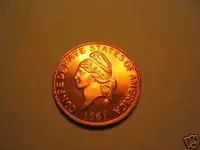Bigcypresshunter
Sapphire Member
- Joined
- Dec 15, 2004
- Messages
- 27,000
- Reaction score
- 3,340
- Golden Thread
- 0
- Location
- South Florida
- Detector(s) used
- 70's Whites TM Amphibian, HH Pulse, Ace 250
- Primary Interest:
- Beach & Shallow Water Hunting
- #141
Thread Owner
I think he is just speculating, Jim. A plausible scenario.SWR said:ivan salis said:-- the cattle themselves however had to be bought and paid for in gold -- that is what the gold shipment was for to be used to buy the beef that was to be shipped north from the local area florida cattlemen --many of whom would not take confederate script or "paper money" --- thus the money was in fact not for "payroll" at all but rather for payment of the beef to be shipped.--
I don't reckon you care to cite some sources for "your" version...do ya?



 Lost Treasure Oct. 2003, in 1865 a half of a ton of gold was transported from Kentucky to Fort Meade. He doesnt say what it was for. (cattle would be a good guess).
Lost Treasure Oct. 2003, in 1865 a half of a ton of gold was transported from Kentucky to Fort Meade. He doesnt say what it was for. (cattle would be a good guess). 




